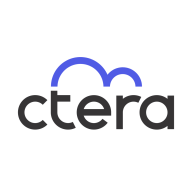

CTERA Enterprise File Services Platform and IBM FlashSystem compete in enterprise data storage. CTERA has the advantage in cost-effectiveness and support, while IBM FlashSystem leads with advanced technical features and performance capabilities.
Features: CTERA Enterprise File Services Platform provides secure cloud storage, data management, and IT integration. IBM FlashSystem offers high-speed data access, scalability, and strong data protection.
Room for Improvement: CTERA could improve advanced technical features, broader enterprise readiness, and expand its service network. IBM FlashSystem needs to simplify deployment, offer more cost-effective solutions, and enhance customer service responsiveness.
Ease of Deployment and Customer Service: CTERA offers straightforward deployment and responsive support, ensuring efficient implementation. IBM FlashSystem has a complex setup process but benefits from extensive support infrastructure, enhancing enterprise readiness.
Pricing and ROI: CTERA offers competitive pricing with strong ROI through efficient management and deployment costs. IBM FlashSystem requires a higher initial investment but provides operational savings and performance benefits that justify the cost for those seeking cutting-edge storage solutions.
Adding SSD storage to Windows file servers is expensive, and we no longer need to back up those devices.
I am positive that CTERA has helped reduce the total cost of ownership by eliminating the need for manual storage management and reducing storage service processes.
The solution can comfortably be stretched from five to seven years without any failures, ensuring a long-lasting return.
They swiftly address concerns and take ownership of the call, providing a very satisfactory support experience.
High-priority issues are handled promptly.
I would rate their support a ten out of ten.
Customers of alternatives like Dell and Hitachi enjoy more reliable and comprehensive support services directly from vendors rather than third-party subsidiaries.
I rate the technical support from IBM as a ten.
IBM customer support is responsible, efficient, and responsive, though it is expensive.
If we need to upgrade CPU and memory, we should be able to do that without a license upgrade.
CTERA is a very scalable product, allowing us to grow.
It offers good scalability options, including vertical and outward scalability.
For larger enterprises, scalability is an issue as the price becomes prohibitive.
The problem arises when migrating data to a later IBM FlashSystem version due to issues with firmware compatibility.
The scalability of IBM FlashSystem is exceptional, and I rate it as a nine.
It has been pretty stable since then.
We had things deployed for years, and we were suddenly getting cloud sync issues that were crashing our sites.
It is very stable and reliable.
Customers have infrastructure that is 100% stable.
The firmware and software engine have fewer bugs, which enhances operational efficiency.
AI and automation features could enhance the platform, such as AI-powered search, predictive storage analytics, and intelligent alerts for proactive monitoring.
It would help to have a global single-pane-of-glass view of all my CTERA devices.
One suggested improvement for the CTERA Enterprise File Services Platform is the ability to distribute data across multiple active backend storage nodes rather than the current limitation of a single active node.
Despite marketing promises, these features do not function effectively and can impact performance.
There is room for improvement in the troubleshooting part, specifically related to IBM Spectrum for Insight.
An additional function that could be helpful is reducing the time it takes to delete volumes, especially if they are compressed or deduplicated.
Unlike other solutions that require hardware purchases, CTERA offers software licensing with flexibility across multiple infrastructure providers.
CTERA's pricing seems to be on par with some of the other players, such as Nasuni and Azure.
I find the pricing reasonable.
To install or upgrade any software features, the cost is high, which makes it challenging for smaller companies who do not require advanced features like deduplication or compression typically needed by larger organizations.
As soon as something is written to the device, CTERA copies it to the cloud, where it's versioned with snapshots so we can recover it.
A vital advantage of this platform is its instantaneous recovery capability, allowing seamless access to a secondary gateway if the primary one fails.
It is a three-in-one solution for us. It is a file-sharing platform, an archiving solution, and also a backup solution.
There is a significant amount of data reduction, achieving a ratio of one to three.
There is built-in compression, a data reduction feature, and artificial intelligence-driven insights that calculate warnings and errors to redirect to customers automatically.
When integrated properly into the environment and configured according to the guidelines, it provides a very solid infrastructure that does the job on demand.


The CTERA Enterprise File Services Platform provides a cloud-native global file system over public and private object storage, revolutionizing the world of hybrid cloud data solutions. Enhanced by a rich data services ecosystem, CTERA enables enterprises to gain full control of their data for optimal edge performance, data insight, and governance. The platform focuses on security, providing features like data encryption, access controls, and ransomware protection. Centralized management tools enable efficient data control and monitoring. The platform is being used to replace legacy NAS and file servers, especially at remote locations, and simplify backup and disaster recovery of file data while providing the flexibility of multi-cloud deployments with infinite scalability. CTERA is at the core of hybrid cloud transformations of some of the world’s largest banks, healthcare organizations, global media groups, and government agencies, in deployments that scale to tens of petabytes.
IBM FlashSystem products are enterprise computer data storage systems that store data on flash memory chips. Unlike storage systems that use standard solid-state drives, IBM FlashSystem products incorporate custom hardware based on technology from the 2012 acquisition of Texas Memory Systems. This hardware provides performance, reliability, and efficiency benefits versus competitive offerings.
We monitor all NAS reviews to prevent fraudulent reviews and keep review quality high. We do not post reviews by company employees or direct competitors. We validate each review for authenticity via cross-reference with LinkedIn, and personal follow-up with the reviewer when necessary.